“The Fine blanking technique produces metal parts with smooth, straight edges and tight tolerances, which makes it the preferred fabrication method for intricate and high-accuracy components.”
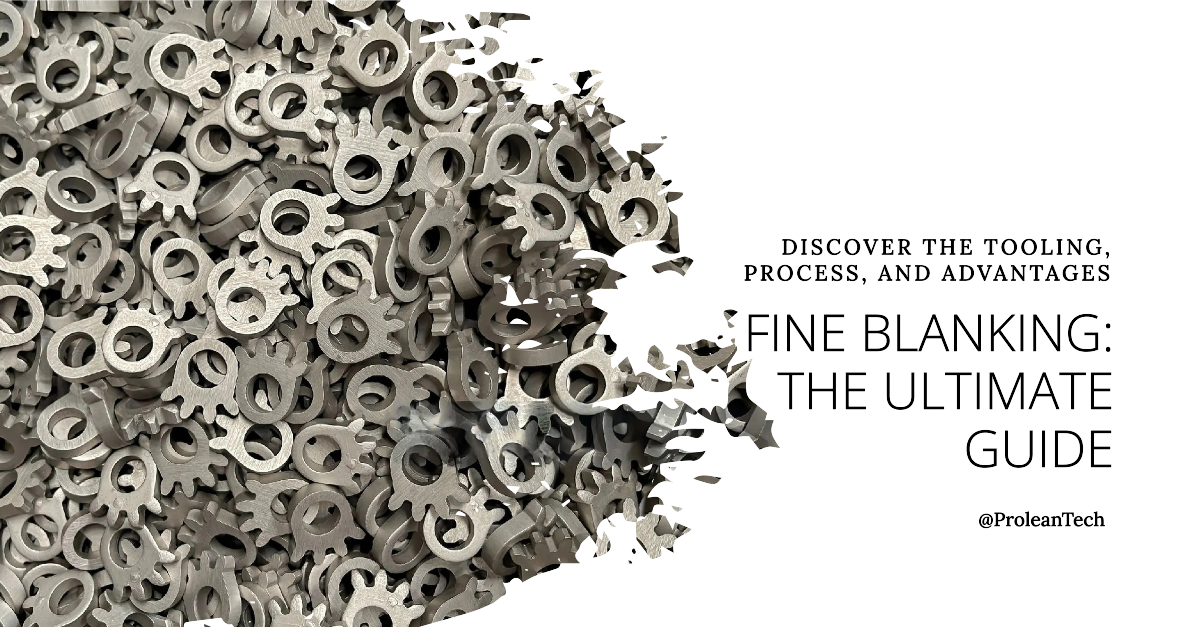
Blanking and fine blanking are both shear-cutting fabrication methods; they create sheet metal parts using die and punch tooling. One main difference between typical Sheet Metal Blanking and fine blanking processes is the clearance between the die and punch. Fine-blanked parts can easily achieve a tolerance of ±0.0003–0.002 inches. Therefore, this is highly preferred in precision parts and components, such as gears, clutch plates, aircraft fittings and brackets, etc.
This article will elaborate on the fine blanking process, its advantages, applications, and its comparison with metal stamping.
What is Meant by Fine Blanking? Is it Similar to Stamping
Punching, blanking, and stamping are all fabrication processes that involve cutting a specific portion of a material sheet with a high-weightage punch. The sheets are placed into a die of pre-determined geometry, and the punch cu-outs the sheet, removing the portion from the sheet. The difference between punching and blanking is that the cut-out section is the intended part of blanking, whereas cut-out portions from worksheets are scraped in punching.
What is Blanking? It is a technique of creating metal parts by shear cutting or sheets into a determined shape. Similarly, fine blanking is a precision shear cutting technique that can create ready-to-assemble or finished products by placing the sheet into the die and punching it to blank out the final part.
Moreover, the fineblanking process is also fundamentally similar to progressive metal stamping. Both of them use a die and counterpart punch of required geometry to produce parts. Stamping uses progressive punching in a worksheet with multiple strokes, whereas fine-blanking only executes a single punch stroke to cut out the part.
Try Prolean Now!
Fine Blanking Tools & Process
Like stamping and punching, fineblanking includes a die and its counterpart punch. The V-ring and counter-punch mechanism are also present in the fine blanking process. In the standard blanking process, the high and instant pressure of the punch causes deformation and rough cuts. Meanwhile, the counterpunch mechanism supports the upward pressure to produce precise and smooth cuts in fineblanking.
The diagram below illustrates a typical fine blanking tool setup, which includes several key components: the punch, blank holder with V-ring, sheet metal, die with V-ring, and counter punch.
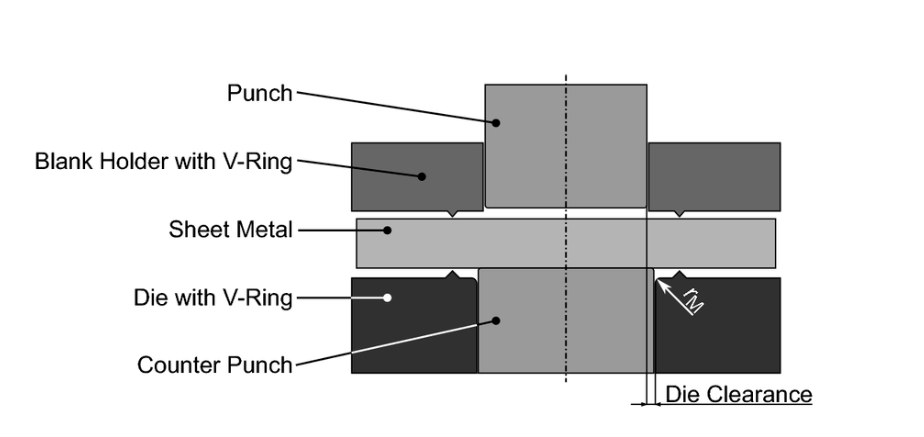
Courtesy: ResearchGate
Furthermore, each of these components or fine blanking tools has an individual role in ensuring the precision and smoothness of metal blanked parts.
Table: Fine Blanking Tools or Tooling Components
| Component | Description | Material | Function |
| Punch | The punching surface accurately matches the desired shape; it moves downward to shear material with a minimal die clearance. | High-strength tool steel or carbide | Shears the material with high precision |
| Die with V-Ring | The die is the counterpart to the punch, whereas the V-ring works with a blank holder to clamp material securely. | High-strength tool steel or carbide | Provides the cutting surface for the punch |
| Blank Holder with V-Ring | The blank holder surrounds the punch and clamps sheet metal securely against the die, while the V-ring prevents lateral movement and distortion. | Tool steel or hardened steel | Prevents lateral movement and distortion during cutting |
How does it work?
Firstly, the sheet is placed inside the die, and the V-ring is fixed to prevent the worksheet from moving unnecessarily. Then, the mechanical lever or automatic mechanism in the blanking machine advances the punch towards the die opening; the high-pressure punch fully blanks out the part and returns to its original position. At the same time, the counter punch holds the part against the advancing punch face.
Furthermore, you can watch the working mechanism of fine blanking here in this animation:
Try Prolean Now!
Fine Blanking vs Stamping: Key Differences
Although both stamping and fine blanking use dies and punches, there are differences in their processes, tooling setup, cost, and other aspects. In stamping, multiple operations(punching strokes) might be required until the final part is blanked out from the sheet. On the other hand, the fine blanking process creates the final part with only a single punch stroke in the die.
Additionally, the counter-punch mechanism attached to the die balances the high pressure applied by the punch, which reduces the burrs, irregularities, and other precision-related issues.
The table below shows some key differences in fine blanking vs stamping;
Table: Differences between Fine Blanking & Stamping
| Aspect | Fine Blanking | Stamping |
| Tooling & Setup | The setup; involves a blank holder, punch, die, and counter punch. | Simpler tooling; primarily involves punch and die. |
| Die Clearance | Minimal clearance (0.5% of material thickness). | Larger clearance (5-10% of material thickness). |
| Precision Level | High precision of ±0.01mm, suitable for intricate and high-quality parts. | Lower precision of ±0.1mm, suitable for general stamping projects. |
| Surface Quality | Smooth, burr-free edges and fine surface finishes. | A risk of rougher edges and possible burrs. |
| Sheet Thickness | Typically, 1mm to 10mm. | It is more flexible with sheet thickness |
| Cost | Higher cost due to complex tooling and setup | Relatively lower cost and suitable for both low and high-volume runs. |
What are the Fine Blanking Advantages?
Precision manufacturing is the first and foremost advantage of fine blanking. The tight clearance between punch and die produces burrs-free clean parts. Also, the single punch contributes to the better finish quality of cutting surfaces.
- CNC integration with the fineblanking operations reduces production cycle time and improves tolerance.
- The finish quality of the cutting surface can be as low as 3.2 μm. So, no (or less) post-processing is required for the blanked parts.
- The counterpunch mechanism eliminates the risk of edges cracking or tearing.
- Fine blank maintains the flatness with no chase of deformation.
- It can also work with hard-to-machine materials like stainless steel or tool steel.
- High Production speed, up to 100 punch per minute.
Examples of Fine Blanking Parts & Products
The fine blanking fabrication methods can create holes, slots, pierces, pockets, and other geometries in blanking parts. Consequently, they are also flexible with intricate shapes and details. These two advantages & fine precision make Applications of Sheet Metal Blanking more diverse and popular.
Here are some examples;
- Automotive parts like gears, clutch plates, brake system components, etc.
- Aircraft parts and satellite components.
- Electrical components, such as switch contacts, connectors, etc.
- Lock, key, and security system components.
- Components for medical devices like surgical instruments and implants.
- Hydraulic and processing plant components
- Watch components
- Kitchenware, sports goods, and consumer items.
At proleanTech, we manufacture sheet metal blanking parts for various applications. Our engineers and operators have experience working with fin blanking projects for electronics, automotive, aerospace, medical, and other industries.
Furthermore, our services are available for punching, stamping, bending, laser cutting, and several other sheet metal projects. We ensure high precision, value for money, and timely delivery. So, upload your design for the sheet metal fabrication quotes.
Try Prolean Now!
Conclusion
Among various metal fabrication techniques, it stands out for its precision and capability to create smooth edges. The lower clearance of punch with die than typical blanking facilitates this precision and smooth edges. You can manufacture a number of metal parts using this technique for industries like electrical, automotive, aerospace, etc. However, the right punch & die setup, v-ring positioning, and counter-punch determine the final quality of blanking parts. So, you need to consider these for a successful project.
FAQs
Are fine blanking and stamping similar?
Fine blanking and stamping are similar in that both are metal-forming processes. However, fine blanking provides higher precision and smoother edges due to an additional counter-punch mechanism.
What is die clearance in fine blanking?
Die clearance in fine blanking is the gap between the punch and the die, typically 0.5% to 1% of the material thickness.
Can fine blanking work with all types of material sheets?
Fine blanking can be done with steel, aluminium, copper, and other materials. However, it is most effective with ductile materials that withstand high punching pressures.
What are examples of fine-blanking products?
Some examples are automotive parts, electrical contacts, medical device components, firearm parts, watch components, and precision tools.

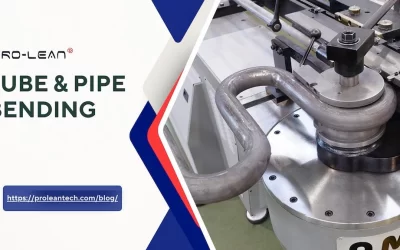
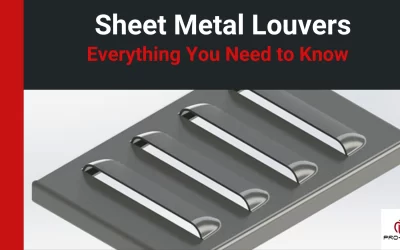
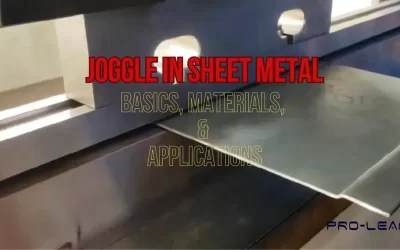
0 Comments